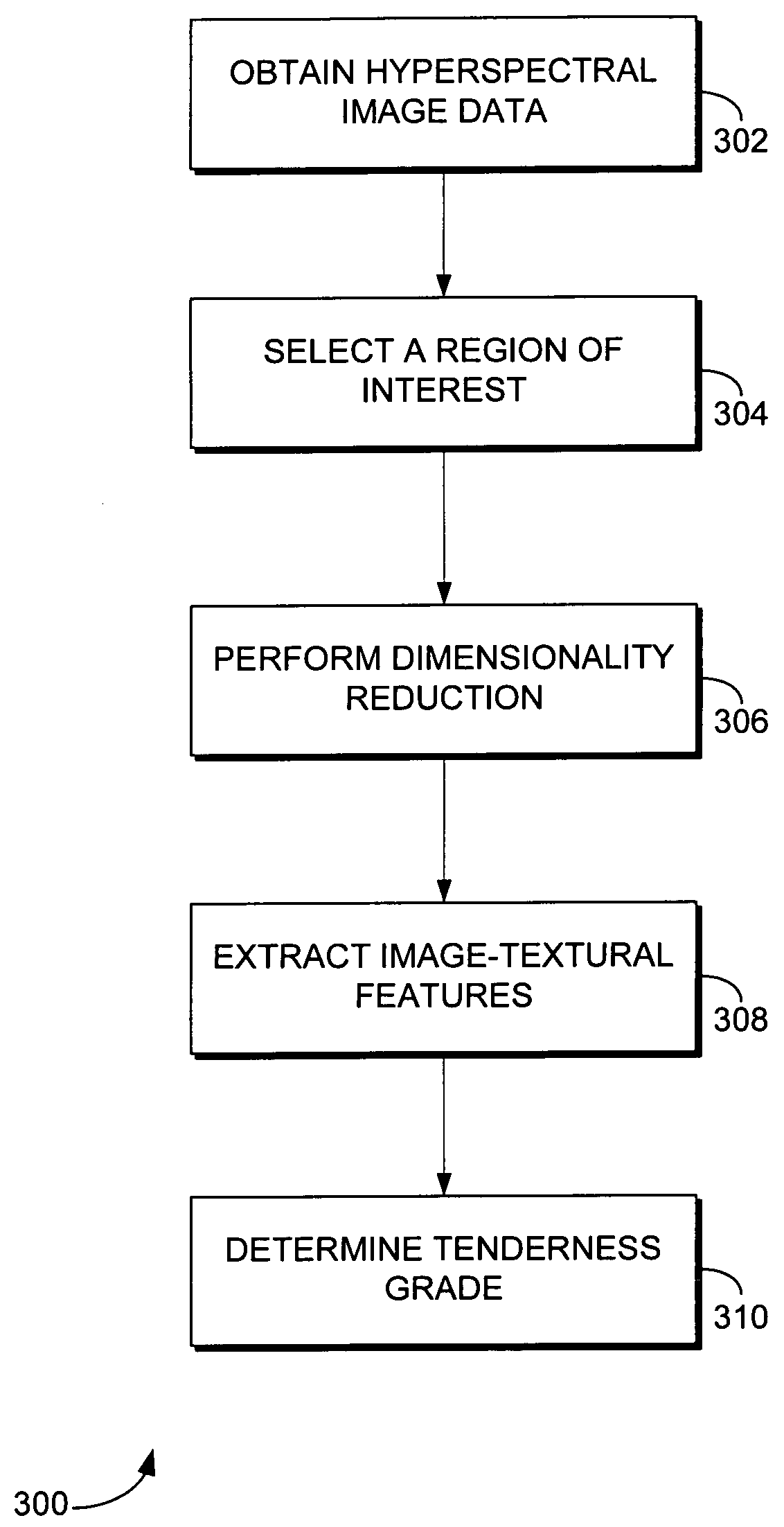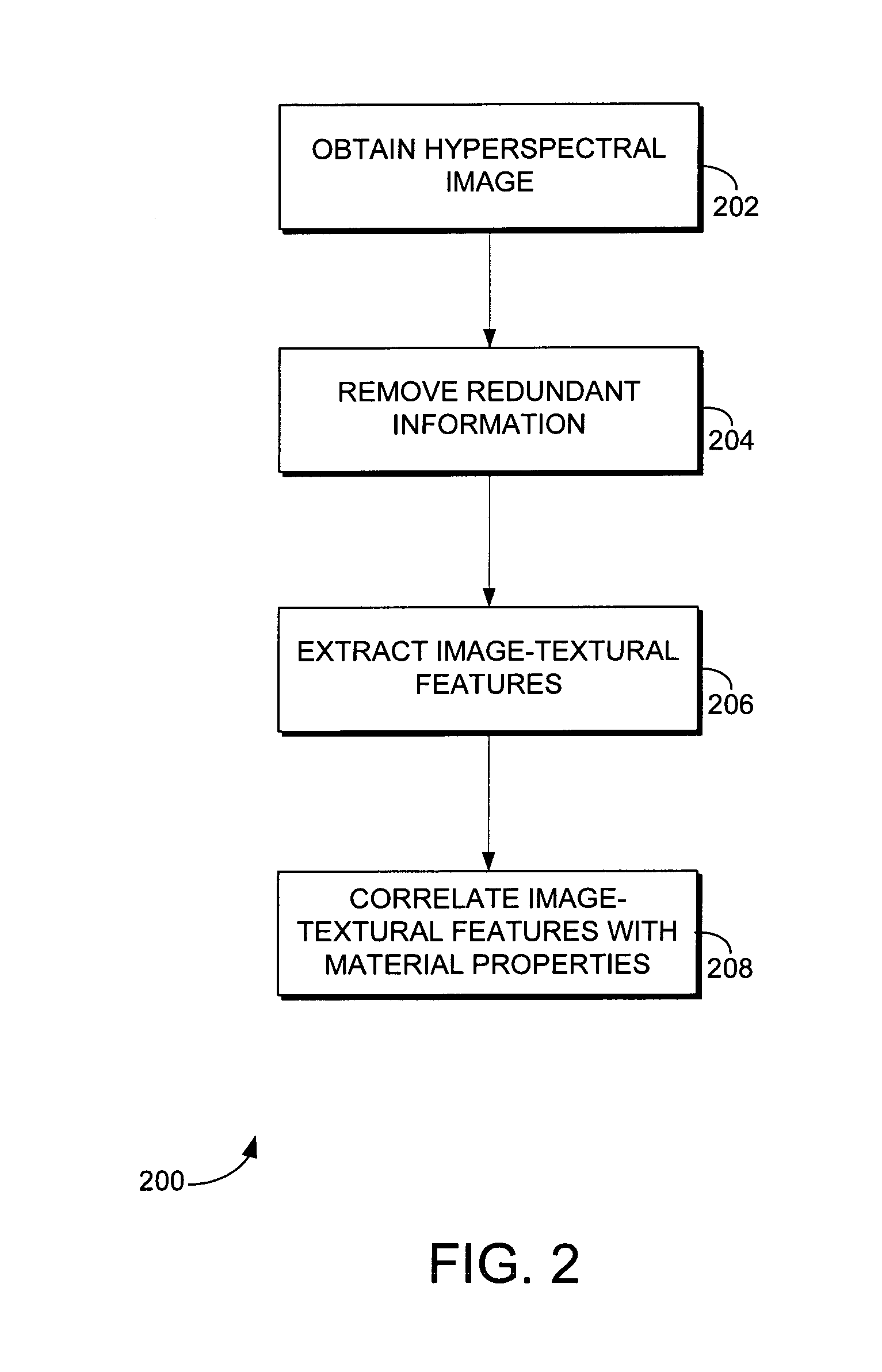System and method for analyzing material properties using hyperspectral imaging
a technology of hyperspectral imaging and material properties, applied in the direction of optical-mechanical scanning signal generators, instruments, optical radiation measurement, etc., can solve the problems of lack of incentives for producers to supply tender products, inability of the usda grading system to incorporate direct tenderness measures, etc., and achieve the effect of reducing the dimensionality of spectral data
- Summary
- Abstract
- Description
- Claims
- Application Information
AI Technical Summary
Benefits of technology
Problems solved by technology
Method used
Image
Examples
Embodiment Construction
[0016]Tenderness is related to two major components: muscle structure and biochemical activity. Tender beef has fine muscle fibers, whereas tough beef has visibly coarser muscle fibers. Two non-destructive methods for beef tenderness prediction were video image analysis (VIA) and near-infrared (NIR) spectroscopy. VIA has been used to extract color textural features to predict tenderness but is limited in predicting tenderness because biochemical information, such as protein degradation related to aging is not considered. In NIR analysis light reflected from the beef sample in the near-infrared region of the spectrum contains information about biochemical properties of a beef sample. Chemometric models based on the spectral data can be used to predict tenderness categories but they achieve only limited success because muscle structural information is not considered
[0017]With reference to FIG. 1, an exemplary system 100 for analyzing material properties of an object using hyperspectra...
PUM
 Login to View More
Login to View More Abstract
Description
Claims
Application Information
 Login to View More
Login to View More - R&D
- Intellectual Property
- Life Sciences
- Materials
- Tech Scout
- Unparalleled Data Quality
- Higher Quality Content
- 60% Fewer Hallucinations
Browse by: Latest US Patents, China's latest patents, Technical Efficacy Thesaurus, Application Domain, Technology Topic, Popular Technical Reports.
© 2025 PatSnap. All rights reserved.Legal|Privacy policy|Modern Slavery Act Transparency Statement|Sitemap|About US| Contact US: help@patsnap.com



